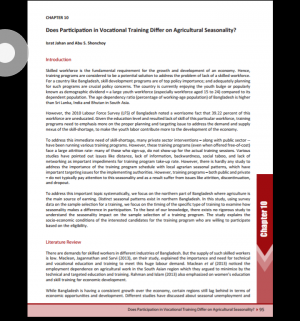For a country like Bangladesh, skill development programs are of top policy importance; and adequately planning for such programs are crucial policy concerns. The country is currently enjoying the youth bulge or popularly known as demographic dividend – a large youth workforce (especially workforce aged 15 to 24) compared to its dependent population. The age dependency ratio (percentage of working-age population) of Bangladesh is higher than Sri Lanka, India and Bhutan in South Asia.
To address this immediate need of skill-shortage, many private sector interventions – along with public sector — have been running various training programs. However, these training programs (even when offered free-of-cost) face a large attrition rate- many of those who sign-up, do not show-up for the actual training sessions. Various studies have pointed out issues like distance, lack of information, backwardness, social taboo, and lack of networking as important impediments for training program take-up rate. However, there is hardly any study to address the importance of the training program schedule with local agrarian seasonal patterns, which have important targeting issues for the implementing authorities. However, training programs – both public and private – do not typically pay attention to this seasonality and as a result suffer from issues like attrition, discontinuation, and dropout. To address this important topic systematically, we focus on the northern part of Bangladesh where agriculture is the main source of earning. Distinct seasonal patterns exist in northern Bangladesh. In this study, using survey data on the sample selection for training, we focus on the timing of the specific type of training to examine how seasonality makes a difference in participation. To the best of our knowledge, there exists no rigorous study to understand the seasonality impact on the sample selection of a training program. The study explains the socio-economic conditions of the interested candidates for the training program who are willing to participate based on eligibility.
